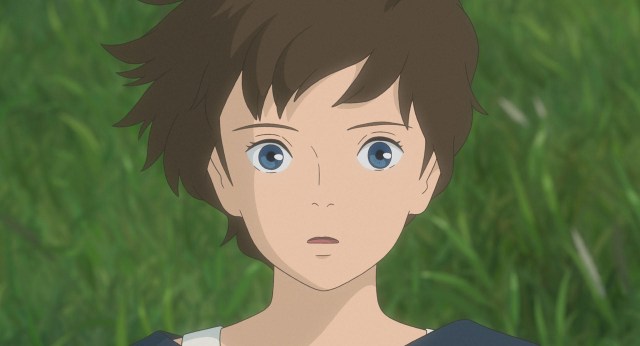
Producer of When Marnie Was There pontificates on psychological differences between men and women.
You’ll find very few entities in any creative field that enjoy the sort of widespread respect and goodwill that Studio Ghibli does. The studio’s animated films are consistently held up as shining examples of theatrical storytelling, a feat that’s all the more impressive when you consider how passionate and opinionated anime fans can be.
As such, many fans of animation, both Japanese and in general, were looking forward to the June 10 U.K. release of Ghibli’s latest, and possibly last, film: When Marnie Was There. Despite premiering in Japan in July of 2014 and making its way to the U.S. in 2015, it’s taken two years for the film to arrive in U.K. theaters, despite being an adaptation of the novel of the same name by British author Joan G. Robinson.
And yet, a comment from Yoshiaki Nishimura, one of the film’s two co-producers, has some Ghibli fans who’d been no doubt excited to see Marnie seeing red instead.
Along with Marnie director Hiromasa Yonebayashi, Nishimura recently traveled to London to promote the film’s U.K. opening. While there, the pair sat down with The Guardian correspondent Chris Michael. While the majority of the interview, which can be found here, deals with the themes in Marnie and their connection to Japanese culture and society, at one point Michael asks “Will Ghibli ever employ a female director?” to which Nishimura responds:
“It depends on what kind of a film it would be. Unlike live action, with animation we have to simplify the real world. Women tend to be more realistic and manage day-to-day lives very well. Men on the other hand tend to be more idealistic – and fantasy films need that idealistic approach. I don’t think it’s a coincidence men are picked.”
It didn’t take long for the 38-year-old Nishimura’s logic to elicit a negative response on the English-speaking Internet.
Nishimura’s remarks are surprising for a number of reasons, not the least of which is that the vast majority of Ghibli’s films have a female protagonist. In addition, the studio’s Kiki’s Delivery Service, Only Yesterday, Whisper of the Heart, Howl’s Moving Castle, Tales from Earthsea, Arrietty, When Marnie Was There, and Ocean Waves are all based on novels or manga written by women. Of Ghibli’s true adaptations, only Grave of the Fireflies and My Neighbors the Yamadas come from source material with a man as their sole creator (the manga version of From Up on Poppy Hill was written by a man and illustrated by a woman).
▼ While The Wind Rises takes elements from an identically titled book by a male author, the Ghibli movie is largely Miyazaki’s own story.
Still, Nishimura wasn’t expressing skepticism at women’s ability to write or draw fantasy, only to direct it in animated form. Again, that’s a pretty broad-brushed, and far-less-than-sensitive, generalization, although he doesn’t frame his statement as pointing out a shortcoming per se, but rather a difference in natural tendencies between the sexes he claims to have observed.
On the other hand, a comment by Yonebayashi in the same interview suggests that rather than a discrepancy in how male and female directors approach storytelling across the board, he feels they might react differently depending on the gender of the characters their project is centered on.
“I’m male myself, and if I had a central character who was male, I’d probably put too much emotion into it, and that would lead to difficulty in telling the story.”
While Nishimura’s remarks are hardly diplomatic, they could stem from Ghibli’s oddly insular position in the anime industry. Unlike other studios which are primarily staffed on a rotating, per-project basis, Ghibli retains its workers as regular employees. While that policy creates stability, it also makes the studio somewhat removed from outside trends such as the increased role of, and demand for, female-helmed works of fiction.
Finally, while Nishimura’s statement is being interpreted by many as “Ghibli won’t hire female directors,” it’s worth considering that, in general, Ghibli doesn’t hire directors who aren’t Hayao Miyazaki or Isao Takahata. Of Ghibli’s 21 features (including the made-for-TV and often forgotten Ocean Waves), studio co-founders Miyazaki and Takahata directed 13, including the first seven. It wasn’t until nine years after Castle in the Sky Laputa, the first release under the Ghibli name, that someone other than them, Yoshifumi Kondo, sat in the director’s chair for Whisper of the Heart, and even that was with Miyazaki writing the script.
After that came Princess Mononoke (directed by Miyazaki), My Neighbors the Yamadas (directed by Takahata), and Spirited Away (Miyazaki again). 2002’s The Cat Returns was the first Ghibli theatrical release without Miyazaki or Takahata handling direction or scriptwriting, and you have to go all the way to From Up on Poppy Hill in 2011, directed by Hayao’s son Goro, for the first time someone other than Hayao Miyazaki or Isao Takahata directed a Ghibli movie for the second time (and once again, Goro’s father was involved in writing the script).
As a matter of fact, when you look at the history of Studio Ghibli, there are only four features (again, including Ocean Waves) that don’t have the elder Miyazaki or Takahata as a director, writer, or producer, which suggests the atmosphere at Ghibli might be less “old boys’ club” and more “club for two old boys.” Also, female writers Keiko Niwa and Riko Sakaguchi collectively have co-writing credits for four of Ghibli’s last five scripts.
Nevertheless, with Ghibli currently appearing more than a little rudderless in the post-Miyazaki era, it might want to take a closer look at female directors to help the studio find its direction.
Source: The Guardian via Hachima Kiko
Top image: Studio Ghibli
Insert images: Studio Ghibli (1, 2, 3)